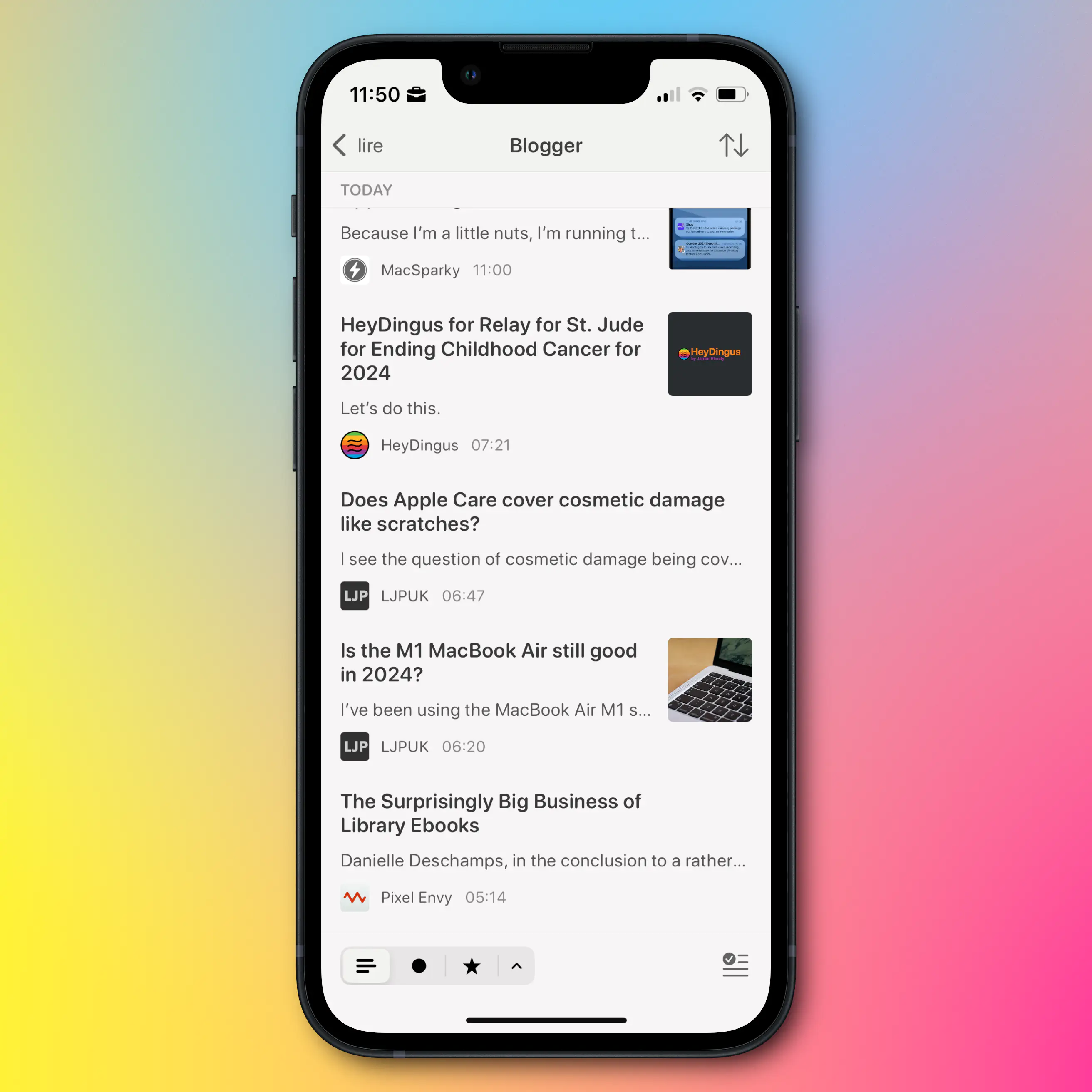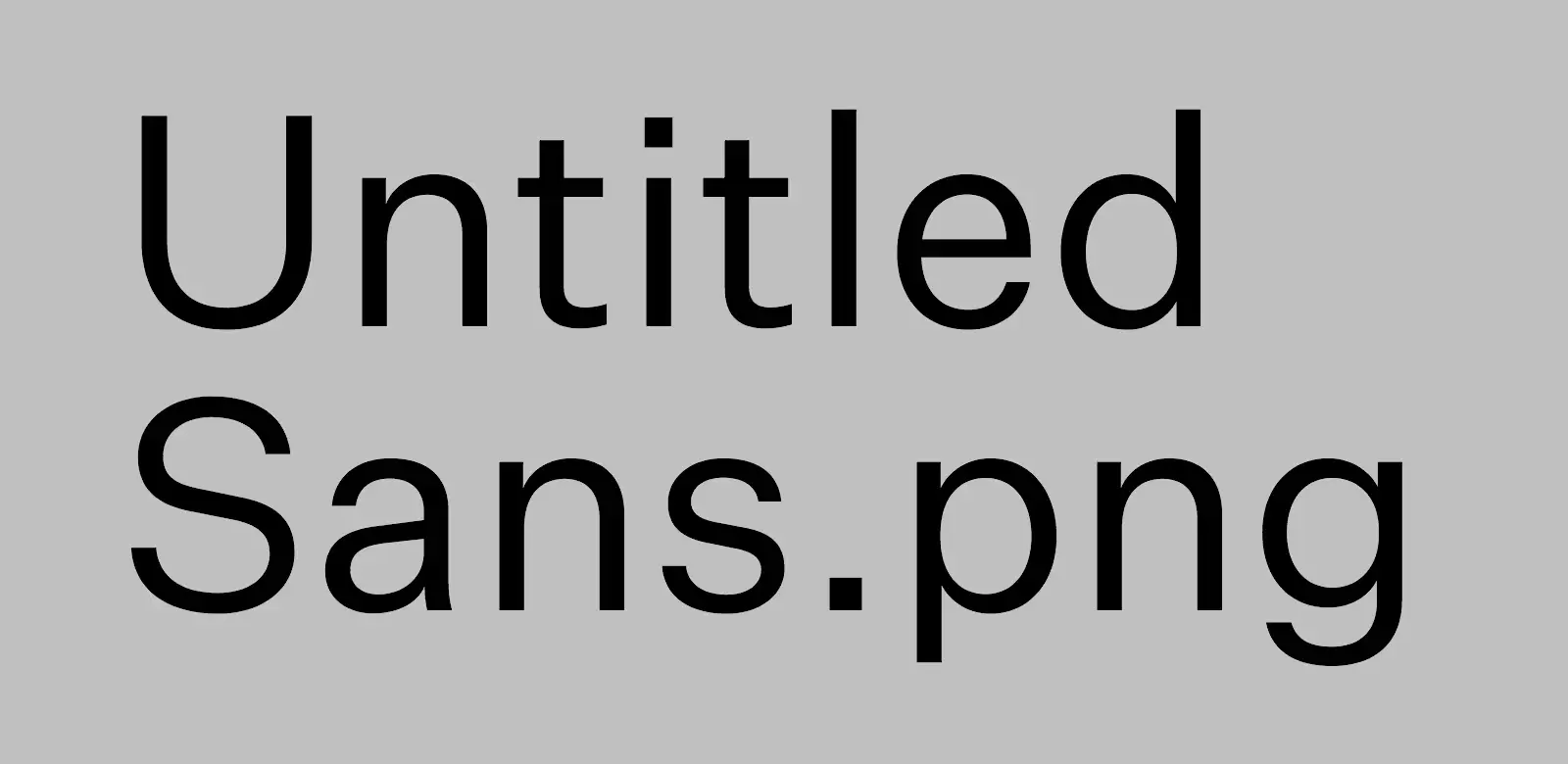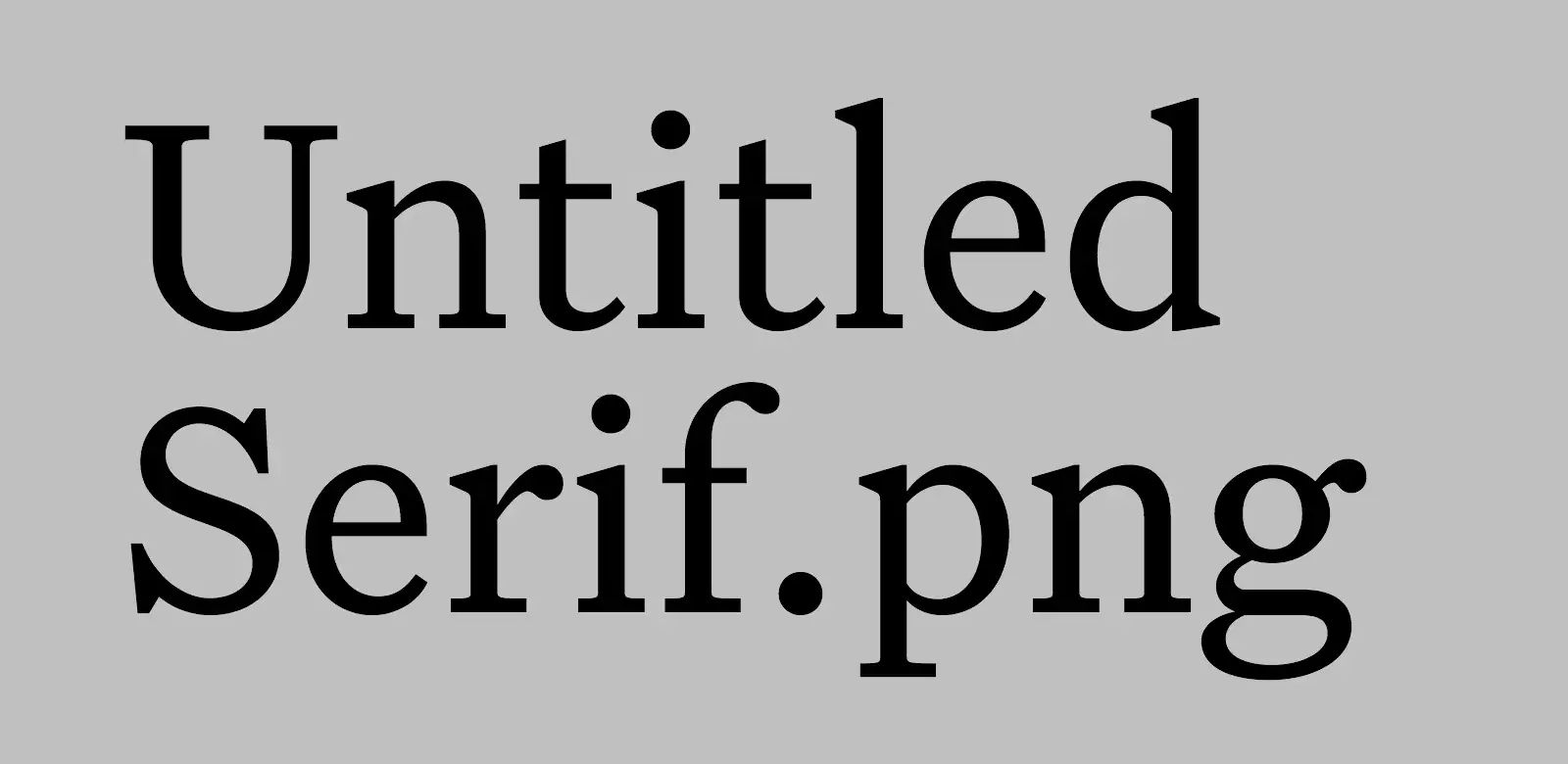The Beauty of Third-Party Services
and Open Protocols and Standards
I’m very much what you’d might call a software snob. Not only do I care about unnecessary things like how an app looks – I also care about how it feels. I’d also say that apps are an interest/hobby of mine, and I love testing new things. So I love open and portable stuff, so that I’m always able to use the software I prefer. Allow me to explain, with four examples: RSS, Email, Browsers, and Markdown.
RSS
My current RSS reader of choice, is Lire. It doesn’t look and feel quite as nice as Reeder and Unread, but it is still good in this regard. However, I love that I can customise the look, that it caches truncated RSS feeds, and that I can (on a feed-by-feed basis) load an inline web browser. This makes it possible to read blogs with their original design, which I think is neat.
However, my feeds don’t live in one client. They’re synced with Feedbin. This makes it trivial to move between clients, and I can even use several in parallell, as things like sorting and read status instantly sync between them. Maybe I prefer Lire on mobile and Unread on Mac, for instance?
Portability is an important principle here. And if I want to move from Feedbin to Inoreader, for instance, I can easily export my feed subscriptions as an OPML file, which I can then import into Inoreader.
So I’m not locked in anywhere, and I can use the client I prefer everywhere. This reality is what I wish I could have for music streaming as well, as I’ve touched on here. It also shows why I want less bundling and integration.
Notes on cross-platform-ness
My best friend, and fellow nerd, has always been adamant in using cross-platform tools – the reason being that he can be flexible in terms of which hardware he uses. He can easily switch between Windows, Mac, iPhone, Android, etc. However, this doesn't gel well with my software snobbery, as most of the best apps (in my opinion) simply aren't cross-platform. I have the same issue with web apps – I love their flexibility and portability, but I don't love using them. So the approach laid out in this post, is my approach to the same idea. But yes, it would be even more robust if I only used web based and cross-platform tools.Now, as opposed to with RSS, there’s not many good email clients… But the same principles apply!
I host my email with Fastmail 🖇️, and I’m very pleased with it.1 But if I still want to switch later, I don’t use an @fastmail.com address. Instead, I use my own domain, hosted on Hover 🖇️ – so I don’t have to change address if I change hosting. I can also change where I have my domain without having to change anything regarding my email.
Now, I don’t like the default Fastmail client – but email being email, I can use a client I dislike less instead!
Browser
Please Stop Saying "Telegram Isn't Encrypted"
You’re not helping - draft 2
Telegram is back in focus these days – and, as usual, not for good reasons. I will write more on this later, as I will have to figure out how to deal with the very real concerns I have with the chat app I use the most. But now I wanted to focus on one thing that’s annoying me a lot, for instance in the latest Vergecast episode.
Why it’s a bad idea to say things that aren’t true
I think it’s crucial to get the word out, that Telegram isn’t as safe as Signal1 – and I applaud those who want to shine a light on that fact. The problem is, that many of them (like Nilay Patel) do it by saying that “Telegram isn’t encrypted”. But what happens if someone has heard that phrase, and then later learns the fact: That Telegram is encrypted.2 They will then perhaps disregard the entire notion, and maybe assume that Telegram is as secure as Signal after all.
My issue with that phrase is that it erases the essential distinction between just “encryption” (or “server encryption”) and “end-to-end-encryption”.
Here’s the difference:
A Good Conversation About Apple and APIs
When comments helps you grow
A couple of days ago, I hastily wrote a quite spicy blog post, about the removal of a good Spotify feature on iPhone. I got some pushback from Jason, and it led to a conversation I liked.
Me and Jason often disagree on stuff – but I always find his comments fair, interesting, and leading to me adjusting my opinions. One important takeaway in this for me, was whether or not this was just a case of someone whining, and putting a spin on, an API getting deprecated. Which is something that sometimes has to happen, but will still often lead to complaints which I often disagree with.
His first comment
I mean, it also could be there was an old way of accessing volume controls, Apple built a new way to work with HomePods, AppleTV, and likely Matter devices. They then deprecated the old API in favor of the new one to maintain one pathway, that yes, means access to its products comes along, but also means one, more modern, more standards compliant API to control devices.
I don’t trust Spotify comms for shit, and don’t know that’s what Apple did, but that story is equally like Apple– get rid of an old API for a new one that does more stuff, misses some functions but adds a lot more, etc. It would also line up with Matter and the addition of these devices that didn’t exist when the original implementation was done.
And for what it’s worth, the bugs that Spotify mention are present with the volume rocker over AirPlay. So, I’m not sure it’s not just Apple’s shit not being as good as it should be, period, versus disadvantaging someone.
My first reply:
The thing is, you can point to a million small examples where Apple makes (decently rational) choices that just so happens benefit themselves at the expense of others. Many of them are of the type “We made this choice, because privacy. That it hampers our competitors, is just a coincidence. So is the fact that we didn’t do this other thing which also would’ve been good for user-privacy, but would hurt us.” If you only look at each thing individually, Apple’s behaviour can often be defended – but you have to look at the larger patterns. Hehe, I agree that it’s a good idea to be skeptical of comms – but I don’t trust “Spotify + Sonos combined” less than Apple, I think. And Apple could’ve decided to comment, but has chosen not to.
And for what it’s worth, the bugs that Spotify mention are present with the volume rocker over AirPlay. So, I’m not sure it’s not just Apple’s shit not being as good as it should be, period, versus disadvantaging someone.
This is a good point! 👆🏻 But I still stand by my stance that these things would be better if the behemoths didn’t insist on competing in more and more markets. (I wrote more about this here.) We would have much cleaner incentive structures, if Apple’s “only” focus was on making their platforms (and hardware) as good as they could make them. (And “competition” would be an important ingredient here.)
His second comment:
How to use your market dominance
What do you do if you’re dominant in some markets, but wished you were more dominant in others?
If this isn’t one of the clearest examples of the problems with too much bundling and integration, I don’t know what is.
So, Apple (the phone maker) is artificially nerfing the competition of Apple (the music streaming service), unless they agree to build stronger integration with Apple (the smart speaker maker).
At imaginary HomePod meeting:
Some guy: “Our speaker would benefit from Spotify integration, but they would rather not build it for free. Should we pay them, like how we demand payment for integration with our stuff?”
Another guy: “No, I have a better Idea: What if we called Federighi, and threatened them instead? We could remove a useful feature that Apple Music (their main competitor) has, unless they agree to our demands.”
Some guy: “Oh, yeah – that’s way better!”
Now, I’m not saying it went down just like that. But it is awfully “convenient”, isn’t it?
So, to be clear, this is the situation:
As I’ve mentioned previously, I moved from Spotify to Tidal this year, due to artist payments. (Now, I’m not sure whether I got that right – but that’s another case.) And the main thing I’m missing from Spotify, is the excellent Spotify Connect. This is both a way of streaming music to different speakers and devices, and a way to control the Spotify playback from any device. For instance, let’s say I start the playback on my iPad, connected to a speaker via a mini-jack. If I then open Spotify on my phone, the playback controls are “live”, like if I streamed from my phone. I can also say “Nah, move the playback to my Sonos speaker instead”.
What Apple has done, is removing the ability to use the phone’s physical volume buttons to control the Spotify Connect volume. So if you listen to Spotify on your phone, with AirPods, clicking the buttons adjusts the volume. But if you then move it to your Sonos speakers, it suddenly doesn’t – it only adjusts the phone’s notification volume. I really don’t like this disconnect.1
Apple is saying that Spotify users can get the feature back if Spotify agrees to integrate with the HomePod – and that’s very problematic.
Imagine me, happy as a clam: I had bought a phone that I liked, and was using a streaming service I liked – party due to how well it worked with my smart speakers, which I also like. And now Apple is jumping in, and making the latter two worse, just because Spotify won’t support a speaker I don’t have.
The Everyday Watch
Writing about watches, yesterday, made me think of a type of watch I just can’t seem to find: The watch equivalent of the classic white T-shirt. I also recently read about an interesting pair of typefaces – and put together I got the inspiration to try my best at designing the watch I just can’t seem to find.
Untitled Sans/Serif
These typefaces are made with the expressed goal of not getting recognised or noticed. The creator, Kris Sowersby, quotes from the book Super Normal, by Jasper Morrison and Naoto Fukasawa:
There are better ways to design than putting a lot of effort into making something look special. Special is generally less useful than normal, and less rewarding in the long term. Special things demand attention for the wrong reasons, interrupting potentially good atmosphere with their awkward presence. — Morrison
Designers generally do not think to design the “ordinary”. If anything, they live in fear of people saying their designs are “nothing special.” Of course, undeniably, people do have an unconscious everyday sense of “normal,” but rather than try to blend in, the tendency for designers is to try to create “statement” or “stimulation.” So “Normal” has come to mean “unstimulating” or “boring” design. — Fukasawa
Some quotes from Sowersby himself:
Most new typefaces are imbued with layers of history, aesthetic associations and cultural signifiers. (…) To lend a new typeface prestige, these blurbs reveal the old specimens that influenced it, and name-drop typographers and foundries long dead. They detail the “engineering challenges” the typeface has heroically overcome — usually small printing sizes, low pixel resolution or limited horizontal/vertical space. Contemporary typefaces are touted as the complete aesthetic and technical package.
But what if you don’t have any special technical requirements, or you want to avoid specific historical connotations? What if you just need to set text with something… utterly normal?
I wanted the details to be exactly normal, without exaggeration. I made a typeface that a designer can use without worrying whether the French Renaissance is an appropriate cultural reference, or if it’s OK to use Bodoni for text. I made all Untitled Serif design decisions while reading. After each round of changes, I embedded the updated fonts into an ePub of Orwell’s 1984 and read several chapters. If a detail stood out, I removed it in the next round of changes. I kept doing this until it was totally comfortable to read.
In general, I absolutely prefer opinionated design – but I do find this approach refreshing. And it fits well with my recent search for a really nice white T-shirt. (I ended up buying this, from Warehouse.)
The missing watch
Most watches fall under some more or less strict categories – like dive, tool, field, dress, or sports watch. And I love, and own, a couple from these categories! But what I feel is missing, both from my collection and the watch world, is a mechanical casual watch. A neutral watch that would fit perfectly with a white T-shirt and a pair of jeans.
Some contenders
✉️ Advice for Cheap Watches
This post is an answer to a part of the latest Comfort Zone podcast episode, where they talked about considering a non-smart watch. In the episode, Matt Birchler said he had considered going back to using a non-smart watch – but that when he asked for advice, people usually said he had to spend around €1.000 to get something good. He ended up saying why he probably didn’t want one anyway, but I wanted to give some advice “just in case”! And also to others who might come by this.
I do love more expensive watches1 – but I also have a soft spot for cheap ones. And my watch collection consists of only sub-€100 watches! So here are my tips: (Click here for the TL;DR.)


